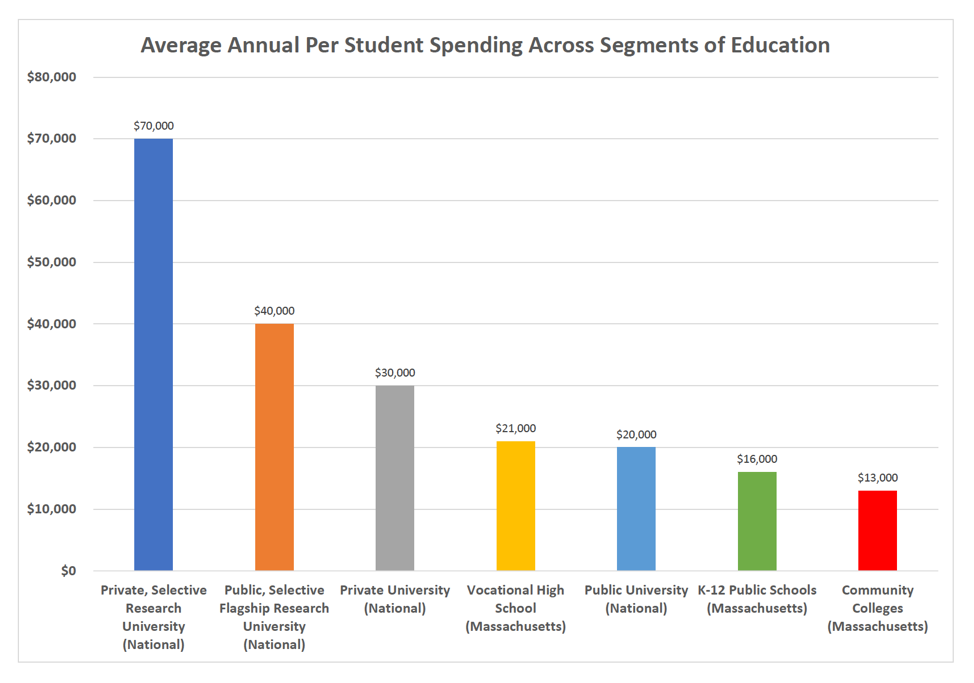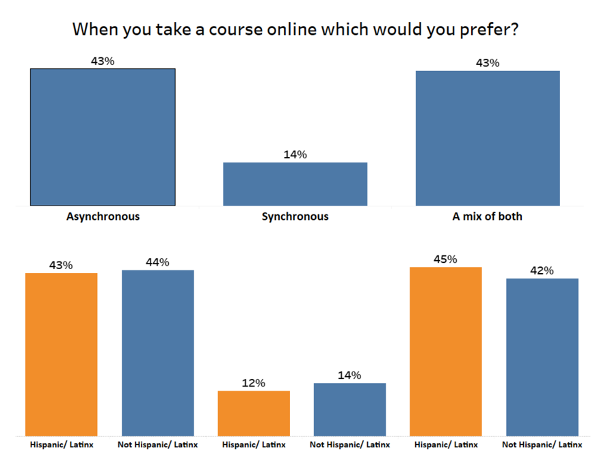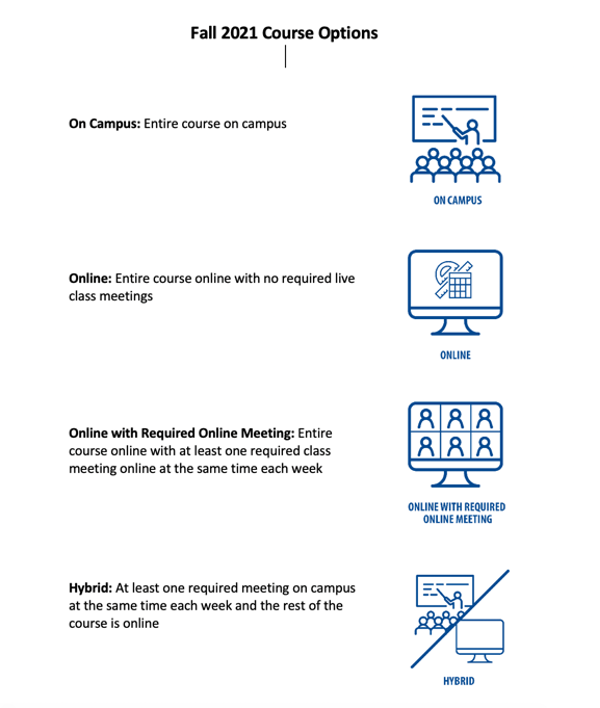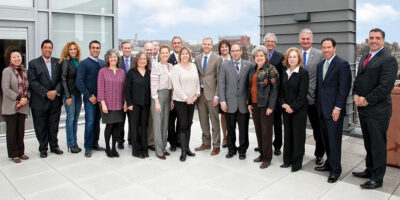Note: This article appeared in Community College Daily on March 1, 2021
By Lane A. Glenn and William Heineman
Last year, just as COVID-19 was beginning to spread and many colleges and universities across the country were scrambling to send students home to finish their spring semesters online, CC Daily ran this piece, “Coronavirus, Community Colleges, and the Equity Gap” explaining some of the ways community college students and campuses are different, and why we may have taken a more deliberate approach to “closing” our campuses.
Now, as we all look hopefully ahead on the calendar to a fall semester that may offer a return to something that feels more “normal,” colleges like Penn State, the University of Southern California, and the public university system of Oregon are already announcing their intentions to be fully on campus and back in person by September.
As much as we would like to join them in their hopeful planning, most community colleges may not be there quite yet, and it seems like a good time to explain why, just as we were more gradual in converting to remote teaching and learning last year, we may take a similarly measured approach to bringing everyone back to our campuses in the fall.
Community College Students are Different
Earlier this month, faced with a sudden surge in COVID-19 cases on campus, the University of Massachusetts at Amherst mandated that all of its students, including 5,000 living on campus and 8,000 living in off-campus housing nearby, spend two weeks in self-quarantine, not leaving their dorms or apartments for classes, work or social activities, and testing for the virus twice a week.
In a letter to the student body, UMass Chancellor Kumble Subbaswamy warned there would be consequences for anyone violating the order, and wrote, “Let this moment be a stark reminder to any of you who may have been cavalier about COVID-19 that your individual behavior has a profound impact on everyone in your community.”
It was a necessary and appropriate step to take, as the campus faced 448 active infections among students in Amherst.
It was also a step that likely would have been impossible for any of America’s 1,050 community colleges.
While around a quarter of community colleges across the country have dormitories, only one percent of our students live on campus.
The average age of our students is 28.
Two-thirds attend classes part-time.
Most community college students work thirty or more hours each week in addition to their classes; nearly a third are employed full-time.
A quarter of our students have children, and an estimated 15% are single parents.
For all of these reasons, community colleges have more in common with tech companies like Google, Apple, and Twitter, which have announced long-term options for remote working arrangements; or Boston area companies like Raytheon Technologies, Drift, and Aquent that have recently announced plans to continue largely remote working operations through the end of 2021, and perhaps beyond, than we do with residential universities.
Put all of this together, and it is easy to see how community colleges have to plan differently for how we return fully to in-person teaching and learning this fall.
COVID-19 Impacts Community Colleges Differently
During the best of times, the differences between community colleges and our students and America’s private and public flagship universities and their students are sizable and challenging. During crises, like the COVID-19 pandemic, they can be especially difficult to reconcile.
Budgets
From a budget perspective, community colleges lag far behind every other segment of education. As the chart below demonstrates, there is an enormous difference in the resources available among private, selective universities like Harvard, MIT, and Tufts, which spend an average of $70,000 per year on their students; the University of Massachusetts at $40,000 per year, and the state’s community colleges, at a meager $13,000 per year.

Without doubt, the federal CARES Act funding provided to colleges and universities has helped us manage the unexpected expenses caused by COVID-19, but those stimulus funds aren’t permanent, and as we look ahead to the fall semester and beyond, we have to ensure that the decisions we are making are ones we can afford to make. The cost of betting on fully in-person offerings and having to retreat once again to remote and online teaching and learning can be steeper for colleges where the “margins” are much thinner.
In addition to tuition, fees, and state appropriations, on campus housing has become a critical revenue driver for many university budgets. The University of Massachusetts recently announced a projected $335 million budget shortfall. An estimated $235 million of that loss, just over 70%, is in dormitory and dining revenue.
From a budgeting perspective, it is clear to see why it is important for residential universities to bring their students back to campus as quickly, and safely, as possible.
Facilities
As community colleges look ahead and try to plan for more in-person classes in the fall, two features of our campus facilities complicate our calculations:
The average class size at a community college is 25 students, while it is not unusual, especially at large regional universities, for classes to enroll 150 or more students. Most of the time, we consider this an advantage: Our students receive more personal attention in the classroom from faculty.
However, it means that our classrooms tend to be smaller, making it more challenging to maintain six-foot social distancing requirements. And, because we have less money to spend and do not usually have residence halls, we tend to have far fewer options for other kinds of spaces to use as alternative classrooms.
Vaccinations
Even as the nation is on an ambitious drive to vaccinate all of our nearly 330 million citizens, hopefully making it much safer to return to normal again, there are huge disparities among who is receiving those desperately needed vaccines.
Here in Massachusetts, according to the Boston Globe, while Black residents are nine percent of the population, so far they are only three percent of those who have received the COVID-19 vaccine; and only four percent of Latinos have been vaccinated, although they are twelve percent of our population.
Similar stories are playing out across the nation, a combination of poorly planned vaccine roll-outs and skepticism about the vaccine itself in many communities of color.
Nationwide, community college enrollment has been more than half students of color since 2014. Northern Essex Community College was New England’s first federally designated Hispanic Serving Institution. Nearly half of our students are Hispanic—two-thirds on our Lawrence campus, where the local population is 85% Latino.
It may take several months longer, if it happens at all, for our student population to be as protected from infection as the students on residential university campuses.
Planning for Fall 2021
So, what is “reopening” our campuses in the Fall of 2021 likely to look like?
Well, first it is important to know that we never actually “closed.”
Here in Massachusetts, a small number of our classes—somewhere around 10% across most of our campuses—have been running in-person, on-campus for the past year. These include classes for emergency medical technicians, dental assistants, and respiratory therapists, where “hands on” learning is an essential part of the job; as well as some science and engineering classes with vital in-person laboratory components.
The results of most of the rest of our classes being online have been predictably troubling: Enrollment was down for both the fall and spring semesters (though not as far as we had projected it would be), and student success rates suffered, particularly for our Latino student population, further widening an already unacceptable equity gap.
We want to bring students back onto campus as soon as possible.
So, to help us with our planning, we invited our students to let us know what they wanted, through an online survey that gathered over 1,100 responses, in a Town Hall forum, and through a student panel discussion at our spring convocation.
What we heard consistently from our students was that they wanted to be safe and healthy, that most had a strong desire for some kind of “synchronous” learning, whether in-person or via Zoom, and that they needed flexibility for lives that had become even more complicated by the pandemic.
When asked what kind of online course they preferred, students responded with a 43% preference for online courses without regularly scheduled, mandatory meetings (asynchronous), a 14% preference for online courses with scheduled meetings offered remotely (synchronous), and a 43% preference for a mixture of the two.

When we asked students for open-ended feedback, one of the most frequent responses went something like this:
“Personally, I’d prefer having online classes that do meet at least once a week. Although we transferred to online last semester (due to the pandemic), I appreciated having an hour where I could connect with my classmates and ask questions in real time. It also provided clarity having the professor teach thru Zoom.”
So, on many community college campuses here in Massachusetts and across the country, our approach to fall semester planning, for now, involves:
- Putting the health and safety of our students, faculty, and staff first
- Ensuring high quality teaching and learning in whatever format it is delivered
- Providing more options for face time with instructors and other students, whether in-person or online
- Trying to be as flexible as possible, so we can adjust later this year if conditions change
As we prepare for fall registration to begin in a few weeks, we have created simple visual icons to help explain to students four different options for their classes, and we plan to keep a close eye on enrollment patterns so we can adjust as we go along, based on demand:

Just as community colleges across the country mindfully planned for remote teaching, learning, and working a year ago; we will be making decisions about how we return to our new normal again with the unique needs of our students and the communities we serve first and foremost in our minds.
Lane A. Glenn is President and William Heineman is Provost and Vice President of Academic Affairs at Northern Essex Community College, with campuses in Haverhill and Lawrence, Massachusetts.






